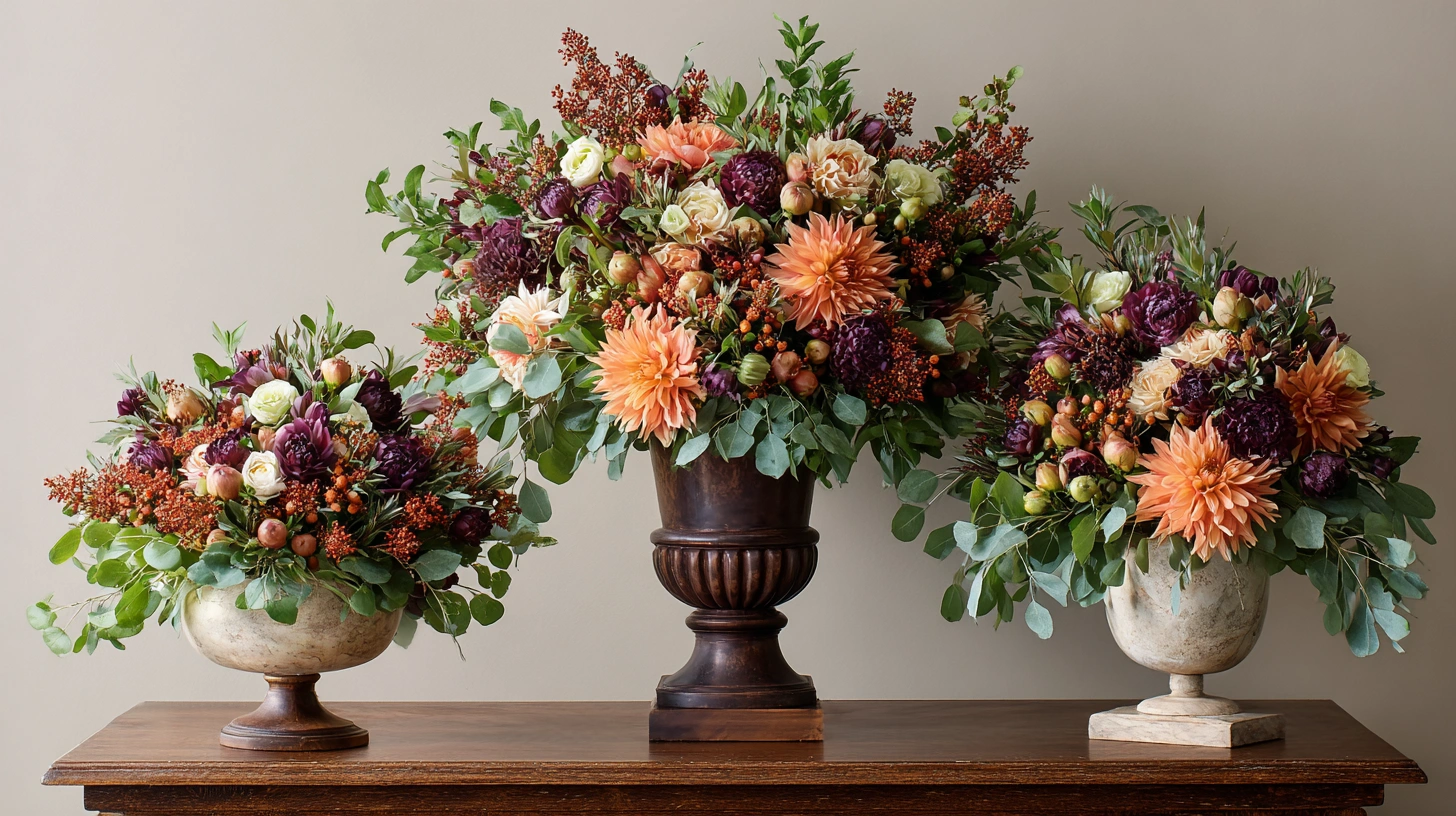
The Allure of Dahlias
Dahlias are remarkable flowers that have captivated gardeners and flower enthusiasts for centuries. Originating in Central Mexico, these vibrant blooms were initially cultivated for their edible tubers, but over time, they transitioned into ornamental plants admired for their striking visual appeal. The daisy family, to which dahlias belong, encompasses numerous varieties, each exhibiting unique shapes, sizes, and colors. From the compact pompon to the large dinnerplate dahlias, this versatility makes them suitable for a myriad of garden designs.
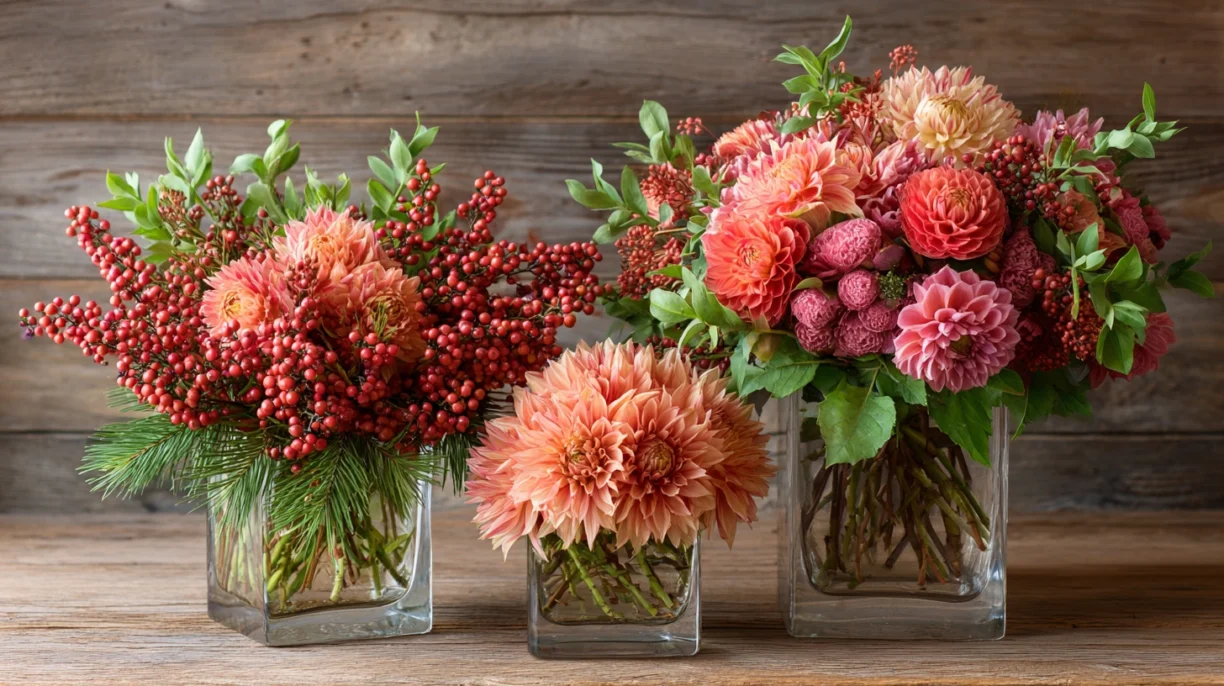
One of the defining features of dahlias is their classification based on flower types, which can include single, anemone, cactus, and ball-shaped blooms. This variety provides endless possibilities for landscaping, allowing gardeners to create dynamic displays with different textures and forms. Distinguished by their vibrant colors, including reds, pinks, yellows, and whites, dahlias hold a special place in fall gardens, where they skillfully blend with the season’s rich palette.
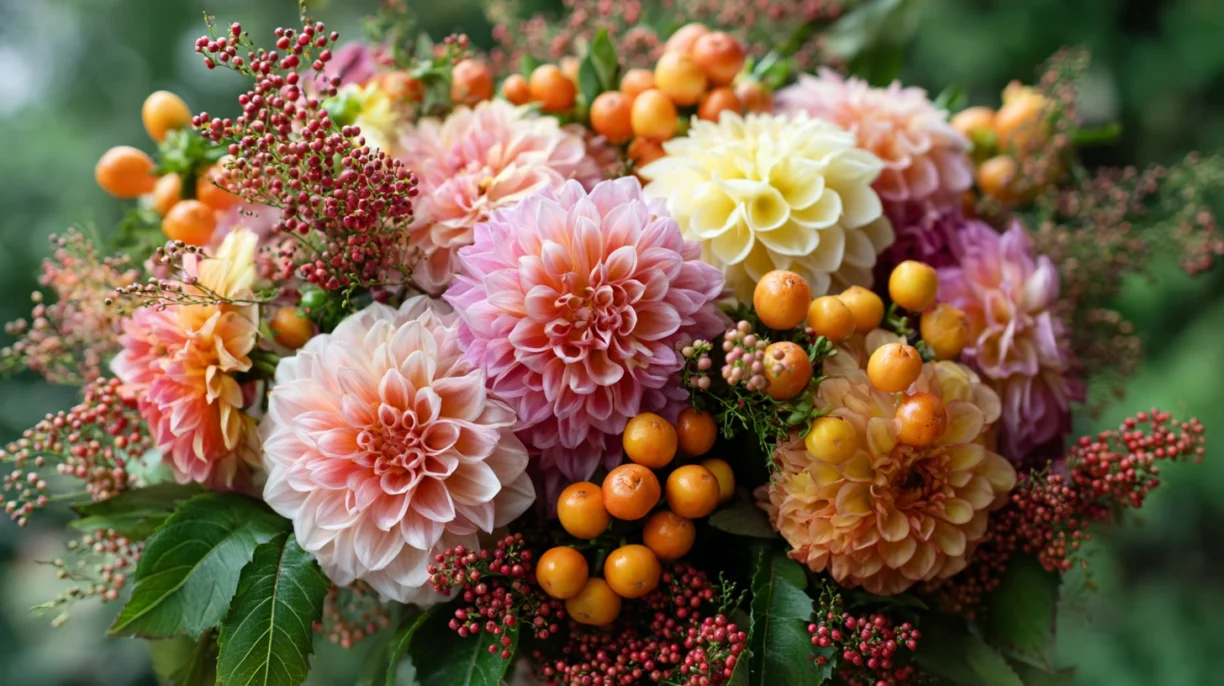
Incorporating dahlias into garden layouts not only enhances visual interest but also contributes to seasonal charm. Their blooming period extends well into the autumn, making them a staple for late-season gardens. To maximize the aesthetic impact, pairing dahlias with other fall-blooming perennials such as asters or sedums can result in enchanting combinations. Additionally, their robust stems and foliage offer a backdrop for ornamental grasses or trailing vines, creating depth in garden beds.
When planning a garden that features these stunning blooms, selecting companion plants that share similar sunlight and water requirements will lead to a thriving and harmonious landscape. With a little foresight and creativity, dahlias can transform any garden space into a spectacular showcase of color and texture, enriching the experience of every gardener and visitor alike.
Chrysanthemums: The Classic Autumn Blooms
Chrysanthemums, often affectionately referred to as ‘mums’, have long been heralded as classic autumn blooms, rich in cultural significance and cherished across various traditions. In many cultures, chrysanthemums symbolize optimism and joy, often appearing in autumn festivities and celebrations. They are frequently used in festivals and decorations, embodying the vibrant colors of fall, from deep reds to sunny yellows, enhancing the seasonal atmosphere.
Chrysanthemums come in a variety of types, broadly categorized into early and late bloomers. Early bloomers, such as the cushion mum, typically flower around early autumn, providing a splash of color as summer fades. In contrast, late bloomers, like the traditional florist mum, bloom later in the season, ensuring prolonged displays of beauty when most other flowers have waned. This versatility in blooming periods makes chrysanthemums a favorable choice for gardeners looking to enjoy extended autumn displays.
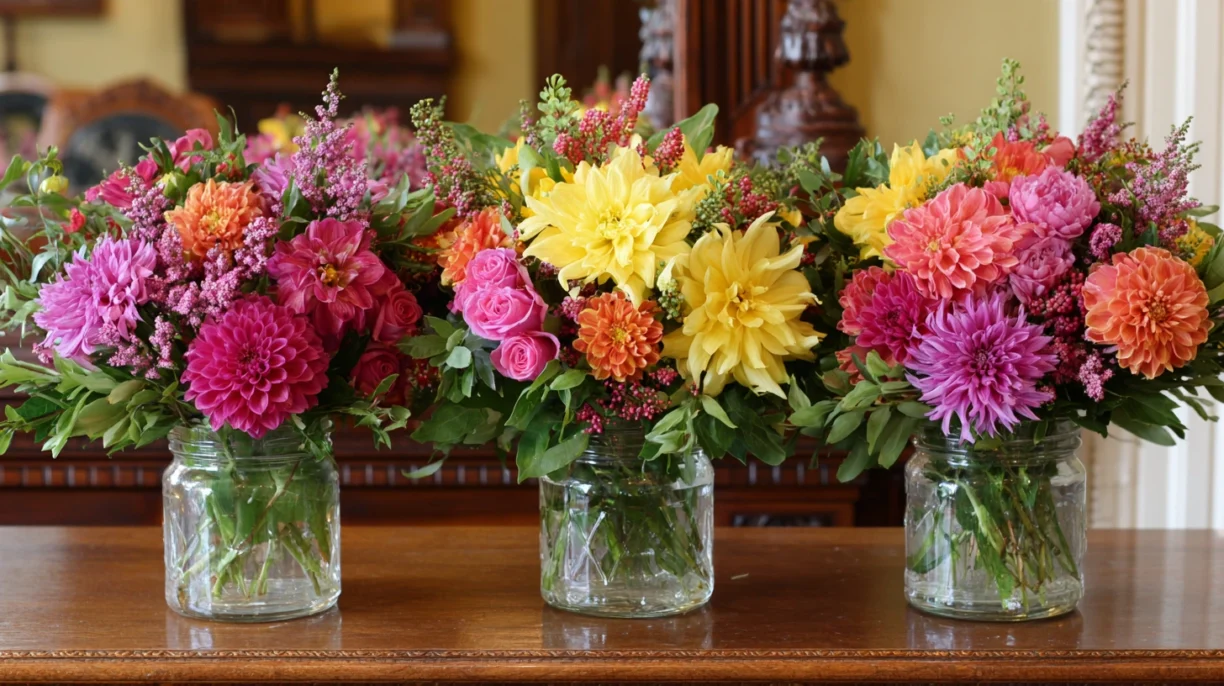
To successfully cultivate these stunning flowers, attention must be paid to their care requirements. Chrysanthemums thrive in well-draining soil enriched with organic matter. They prefer a sunny location, receiving at least six hours of direct sunlight daily. Watering is equally crucial; soil should be kept consistently moist but not waterlogged, as overwatering can lead to root rot. Fertilizing mums during their growing season can encourage lush growth and abundant blooms. By following these care guidelines, gardeners can ensure that chrysanthemums flourish in their spaces, providing stunning displays that symbolize the essence of autumn.
Through their diverse forms and vibrant hues, chrysanthemums are not only aesthetically pleasing but also embody rich cultural meanings, making them an integral part of the autumn landscape.
Designing Your Fall Garden with Dahlias and Chrysanthemums
Dahlias and chrysanthemums are two flowering plants that can completely transform your fall garden. The vibrant colors and unique shapes of these blooms offer endless possibilities for garden design. To create an impactful display, begin by selecting a color palette that complements your existing landscape. Rich tones such as deep reds, burnt oranges, and creams work exceptionally well, embodying the essence of fall. When planning your arrangement, consider the height and structure of each flower. Tall dahlias can serve as stunning focal points, while shorter chrysanthemums can fill in gaps and provide ground cover.
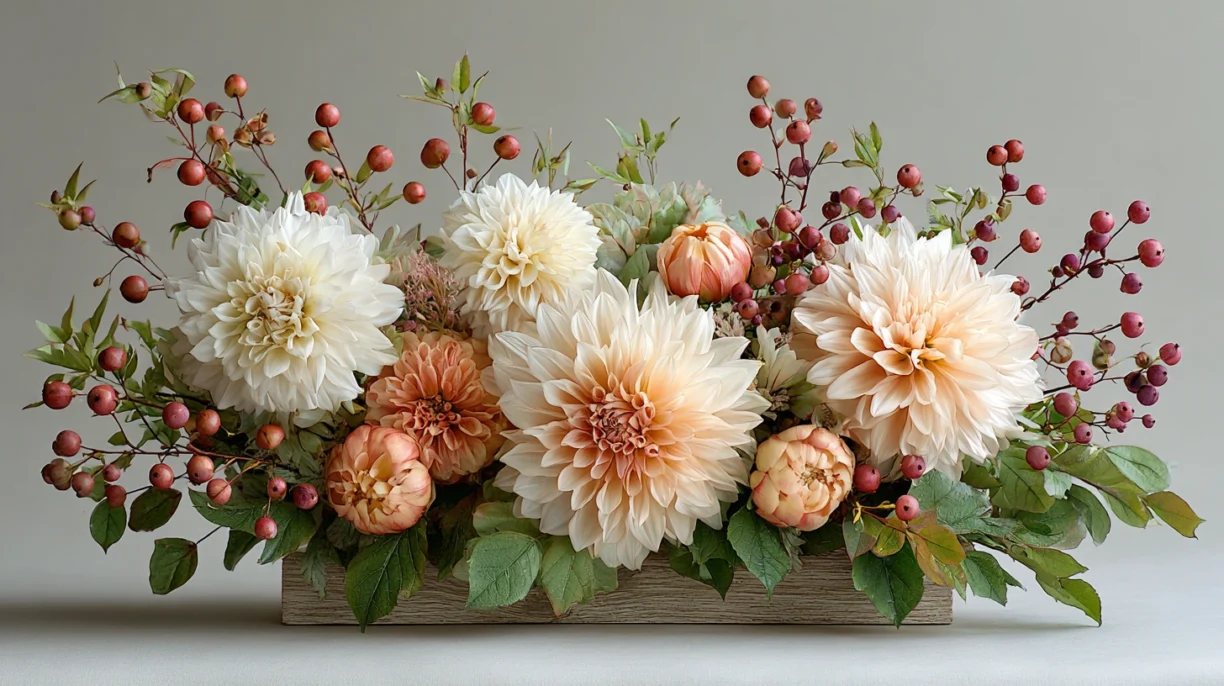
Another effective design strategy is layering, where taller plants are placed at the back of borders, and shorter varieties are positioned towards the front. This arrangement not only maximizes visual interest but also allows for easy viewing of all blooms. When arranging dahlias and chrysanthemums, mixing various textures and forms can enhance the overall aesthetic. For instance, combining the lush, bushy form of chrysanthemums with the elegant stems of dahlias creates a dynamic visual effect.

As you incorporate these flowers into your garden, consider additional seasonal decor to elevate your displays. Dahlias can be cut and placed in stylish vases for indoor arrangements, while chrysanthemums can be used in wreaths or other festive decorations. This not only adds charm to your garden’s transition into fall but also allows you to bring the beauty indoors. Utilizing these blooms to guide your design can extend the life of your garden into winter, seamlessly blending fall themes with the changing seasons.
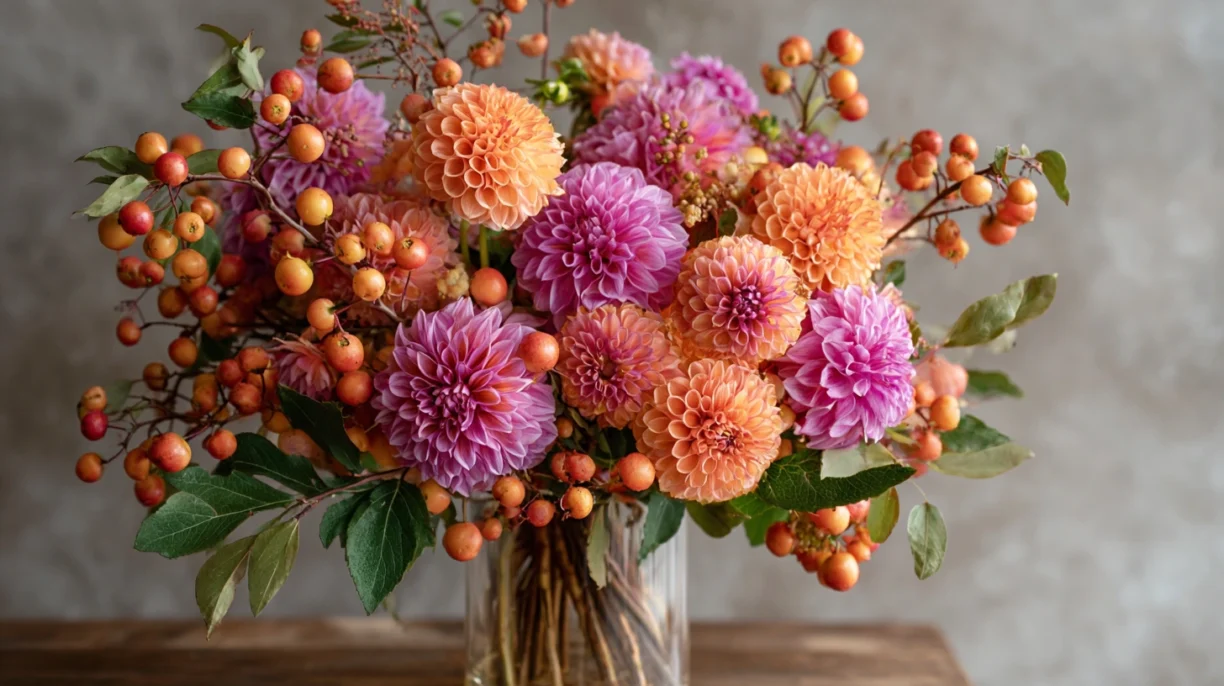
Ultimately, dahlias and chrysanthemums serve as key elements in your fall garden design. By thoughtfully integrating these flowers, you can create a visually captivating landscape that leads the eye into the enchanting winter months.
Caring for Your Dahlias and Chrysanthemums
Caring for dahlias and chrysanthemums requires a balanced approach to ensure these vibrant blooms remain healthy and flourishing throughout the growing season. One of the fundamental aspects of plant care is fertilization. Dahlias thrive with the application of a balanced fertilizer, ideally one that is lower in nitrogen and higher in phosphorus and potassium, as this promotes robust root development and flowering. During the growing season, applying fertilizer every four to six weeks can significantly enhance their performance. In contrast, chrysanthemums benefit from a similar fertilization routine; however, a general-purpose fertilizer can suffice, especially if the soil is rich.
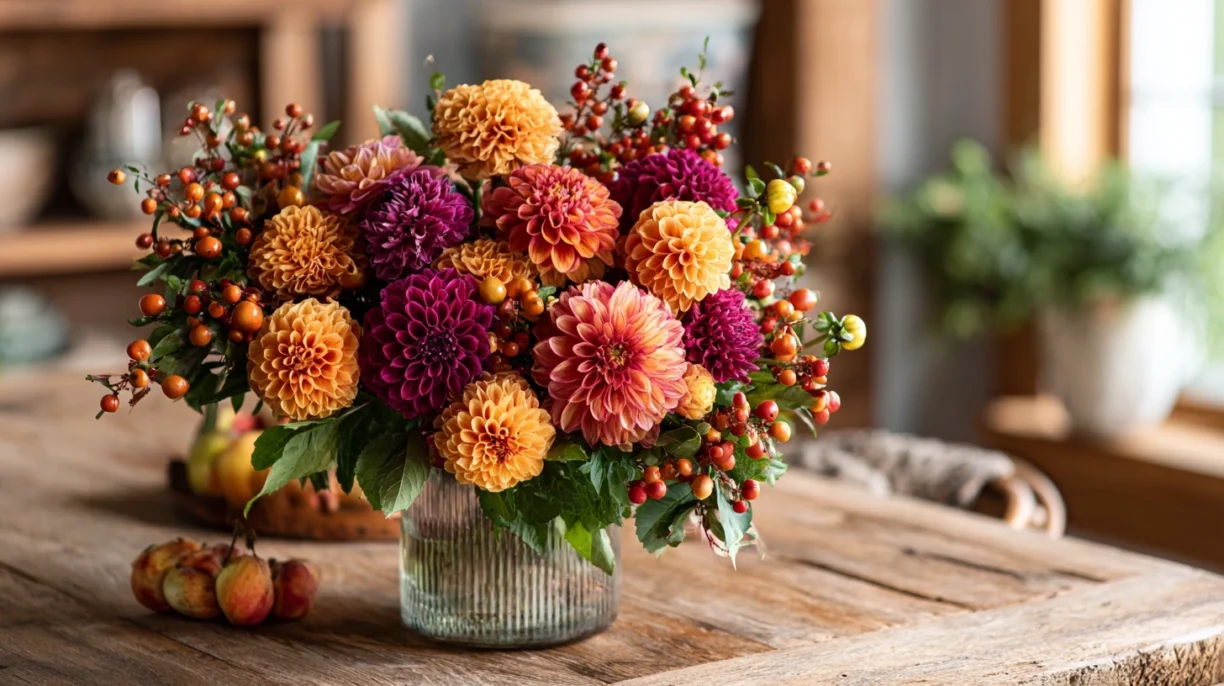
Pest management is another crucial consideration in maintaining the health of these plants. Regularly checking for common pests such as aphids and spider mites is advisable. If detected, using environmentally friendly insecticidal soap can effectively manage these infestations. Additionally, ensuring good air circulation around the plants and avoiding overhead watering can also minimize the risk of powdery mildew, a common fungal issue, particularly in chrysanthemums.
Pruning is essential for encouraging healthy growth and prolonging blooming periods. For dahlias, deadheading spent flowers will promote additional blooms and prevent the plant from expending energy on seed production. For chrysanthemums, pinching back the stems during mid-summer encourages bushier growth and more flowers. As the seasons change, preparing dahlias and chrysanthemums for winter is vital; dahlias should be dug up and stored in a cool, dry place to prevent frost damage, while chrysanthemums can be mulched for insulation.
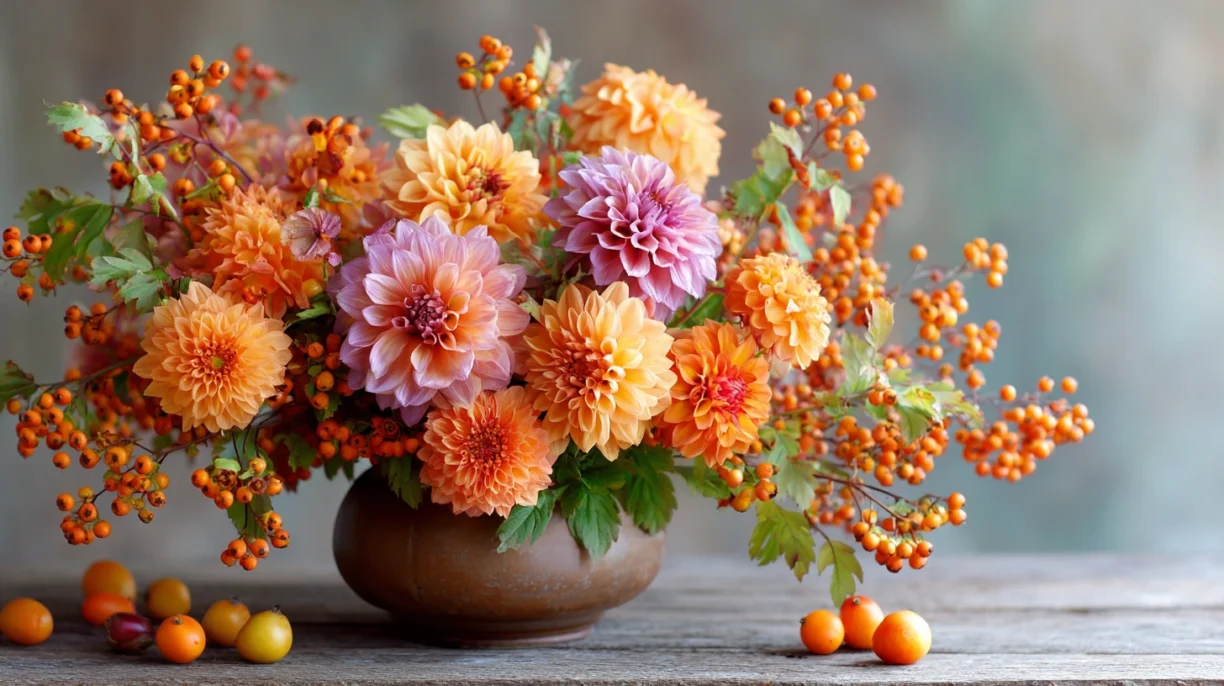
Common challenges faced by gardeners include diseases or environmental stressors. Identifying the signs of stress—such as wilting or discolored leaves—can help in troubleshooting before conditions worsen. Regular observation and appropriate cultural practices are key to successfully addressing issues as they arise.
Author: https://yanivflowers.com
